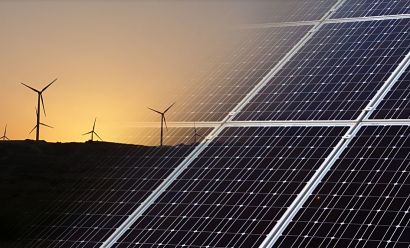
The EIC Asia OPEX Report, released yesterday (19th November), provides an in-depth analysis of the region’s energy landscape, excluding China.
Offshore wind emerges as a key area of development, driven by favourable wind conditions in the Taiwan Strait and South China Sea. Taiwan, a regional leader in offshore wind, added significant capacity in 2024, including the 600 MW Changfang and Xidao Wind Farm and Ørsted’s Changhua 1 and 2a Wind Farms, which total 900 MW.
These projects contribute to Taiwan’s long-term target of 13 GW of offshore wind by 2030. However, growth is uneven across Asia.
“Offshore wind is poised to become one of the fastest-growing renewable sectors in Asia, driven by ideal conditions in regions like the Taiwan Strait and South China Sea” said Lim Xiao Shuen, APAC Analyst for Operational Assets and Decommissioning at the EIC. “However, geopolitical risks and stringent domestic sourcing requirements have tempered foreign investments … The region's trajectory underscores the need for enhanced grid infrastructure, streamlined regulations, and innovative financing solutions to unlock the full potential of offshore wind as a critical driver of Asia's renewable energy mix.”
The other focus area is solar energy, where India is leading installations across Asia. In fact, the Khavda Solar Park in the state of Gujarat has a total production capacity of 2 GW. Floating solar is gaining traction in land-scarce regions such as Taiwan and Southeast Asia. Countries like Vietnam, on the other hand, shifted their installations to rooftop solar, setting government targets of 50 percent penetration in office and residential buildings by 2030.
But solar faces its own setbacks due to market fluctuations driven by grid bottlenecks, inconsistent policies, and logistical hurdles in some regions, the report said, adding that solar installations have fallen by 40 percent across Asia in 2023 before bouncing back this year.
Despite these developments, 41 percent of Asia’s power mix still comes from coal. The dominance of coal is particularly seen in India, Vietnam, and Indonesia, while countries like Taiwan and Malaysia focused on natural gas. ASEAN region aims to achieve 35 percent renewable energy capacity until 2025, but the report warns of great variability between countries in reaching their targets.
“There is no doubt that Asia's renewable energy progress shows massive potential” added EIC's Head of External Affairs, Rebecca Groundwater. “But it’s also clear that without stronger regional coordination and targeted investments in infrastructure, the full benefits of clean energy technologies will go untapped. Governments across the region need to give priority to harmonising their policies and building resilient energy grids if they wish to see any real acceleration in the shift away from coal and toward sustainable, long-term energy production.”
The results exclude China, a world leader in renewable energy technology. Although China's cleantech investments are unmatched, dependence on hydrocarbons, specifically coal, muddies the full picture of its energy strategy. The report looks at trends from other Asian countries in finer detail on renewable capacity addition and policy frameworks.
Energy storage is highlighted as a critical area for future investment. Pumped hydro dominates storage, representing 97 percent of the region’s capacity, but battery storage is growing in importance. South Korea commissioned a 336 MW battery energy storage system at Bubuk in 2024, while Japan continues to lead in installations, including the 240 MW Toyotomi Battery Storage System. India’s government is incentivising battery adoption through financial schemes like Viability Gap Funding, as solar and wind growth necessitate greater grid stability.
Offshore wind and energy storage, while promising, face challenges such as permitting delays, grid integration, and local content requirements, the report says. Taiwan’s strict regulations mandating 60 percent local sourcing for offshore wind farm components have deterred some investors, even as others, such as Ørsted and Copenhagen Infrastructure Partners, commit to the market.
The report provides a mixed outlook for Asia’s energy transition. On the one hand, large-scale renewable projects and policy incentives are pushing the region toward cleaner energy. On the other, grid congestion, financial constraints, and coal dependency slow progress. The EIC emphasises the need for stronger policy coordination and investment in infrastructure to meet global net-zero targets.
Asia added 28.6 GW of new capacity between September 2023 and September 2024, with renewables comprising 25 percent of this figure. While solar and offshore wind accounted for the majority of renewable additions, coal continues to dominate as countries grapple with balancing energy demands and transition goals.
For additional information:

